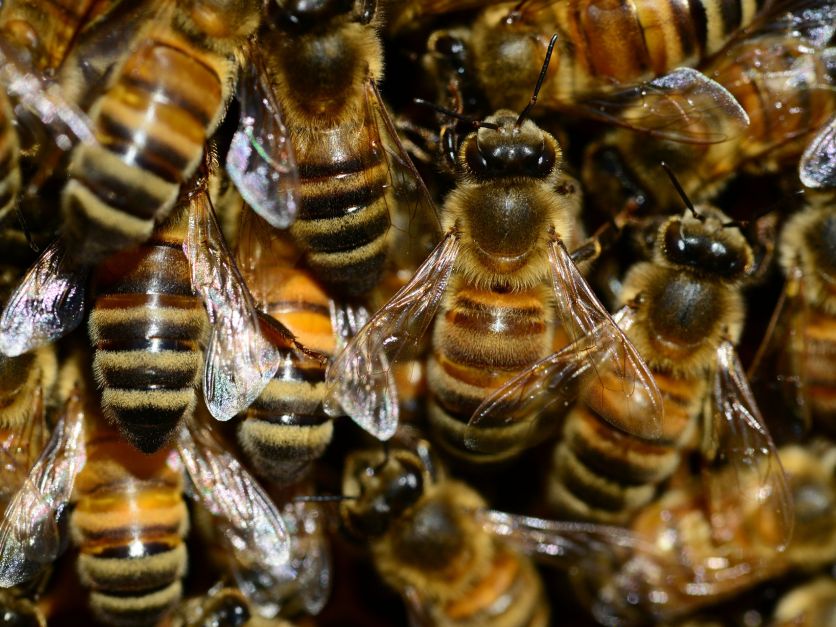UNITED KINGDOM, July 5, 2017 - A large, field-scale study that examined the effects of two widely used neonicotinoid insecticides on bees in three European countries has produced mixed results, which are being interpreted in starkly different ways.
The lead authors, from the Center for Ecology and Hydrology in Oxfordshire, United Kingdom, said their “findings point to neonicotinoids causing a reduced capacity of bee species to establish new populations in the year following exposure.” But the summary of their paper, published in Science magazine June 30, also said that when they looked at effects of the insecticides on domesticated honey bees, they found “both negative (Hungary and United Kingdom) and positive (Germany) effects during crop flowering.”
The researchers also found that exposure to treated oilseed rape crops “reduced overwintering success of honeybee colonies – a key measure of year-to-year viability” in Hungary, where colony numbers fell by 24 percent the following spring, CEH said in a news release. In the UK, “honeybee colony survival was generally very low, but lowest where bees fed on clothianidin- treated oilseed rape in the previous year.”
But “no harmful effects on overwintering honeybees were found in Germany,” the CEH said.
The study’s lead author, Ben Woodcock of CEH, said it showed that Bayer’s clothianidin and Syngenta’s thiamethoxam “caused a reduced capacity for all three bee species to establish new populations in the following year, at least in the UK and Hungary.”
In addition to honeybees, the researchers examined effects on two wild bumble bee species.
It’s unclear what impact the study will have in the U.S., where the Environmental Protection Agency continues to prepare risk assessments on the effects of neonics on pollinators. But staunch opponents and defenders of neonics both found something to like in the results.
Friends of the Earth in the U.K. called the study “hugely important because it’s the biggest study of these pesticides in the real world – covering a crop area equivalent to 3,000 football pitches.” FOE U.K. said it “reinforces concerns that bees are being exposed to neonicotinoids not just by directly foraging on the treated crop” but by encountering residues from previous applications.
Syngenta and Bayer, which provided most of the funding for the research – about $1.5 million each – had a different take on the results. Peter Campbell, head of research collaborations at Syngenta, quoted the study itself: “We welcome the fact that the study concludes that ‘neonicotinoid residues were detected infrequently... [and] direct mortality effects by exposure to high concentrations of neonicotinoids are likely to be rare.’”
Still, the study followed up that observation by saying, “However, our results suggest that exposure to low levels of neonicotinoids may cause reductions in hive fitness that are influenced by a number of interacting environmental factors.” Woodcock said those factors include the availability of alternative flowering resources for bees in and around farms as well as the general health of colonies. Hungarian and UK honeybees tended to be more diseased.
“In contrast, the hives in Germany happened to be larger, showed little evidence of disease and had access to a wider range of wild flowers to feed on,” CEH said. “Woodcock suggests that this may explain why in this country alone there was no evidence of a negative effect of neonicotinoids on honeybees.”
Syngenta’s Campbell said the company was “pleased to see that in Germany during crop flowering, the use of neonicotinoid seed treatments has a positive and beneficial impact for both honeybees and bumble bees.” In addition to honeybees, the study looked at the impacts on two species of wild bumble bee.
And Bayer said the study “confirms what we’ve long known: Beekeeping practices and habitat are critical issues in ensuring bee health. The study shows that when hives are healthy and relatively disease-free and when bees have access to diverse forage, neonics do not pose a danger to colony health.”
The company added, “It is important to consider both studies in the context of recently released neonic risk assessments from EPA and the Canadian (Pest Management Regulatory Agency) which found low risk, in particular from seed treatment uses of neonics.”
Complicating the debate about whether neonicotinoid seed treatments significantly affect bee health and numbers, the study also noted the presence and potential effects of neonicotinoid residues, particularly imidacloprid, another Bayer product. For the two bumble bees, “neonicotinoid impacts were associated with the residues found in nests rather than the experimental seed treatments,” the study said.
The European Union banned thiamethoxam, clothianidin and imidacloprid (made by Bayer) on flowering plants in 2013 while it conducts more reviews on their environmental impacts, and the EU is now considering a wider ban. But the insecticides can persist in the environment for years, so “their previous widespread use has the potential to impact negatively wild bee persistence in agricultural landscapes,” the study said.
Woodcock’s take on neonic seed coatings was more circumspect than the reaction of environmental groups and much of the subsequent media coverage, which generally characterized the study as confirming the danger of neonics to the future of bees.
“Neonicotinoid seed dressings do have positive attributes,” he said. “They target insects that damage the plant, can be applied to the seed at low dosage rates but protect the whole plant and reduce the need for broad spectrum insecticide sprays. Their use as an alternative chemical control option is also useful in controlling pests where insecticide resistance to other pesticides is already found, so play an important role to play in food production.”
But the debate is not over, by any means. Even Science magazine itself, in its article on the study, quoted Dutch biologist Tjeerd Blacquière of Wageningen University, “We learn again: It's complicated.”
#30


